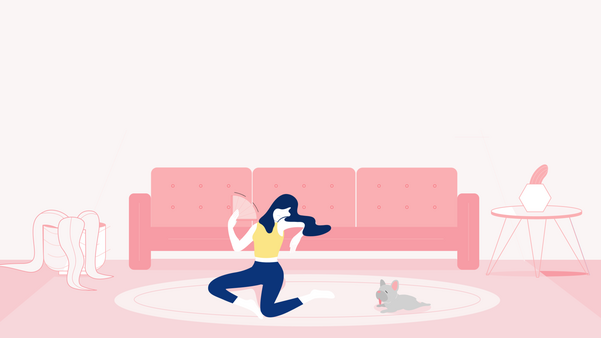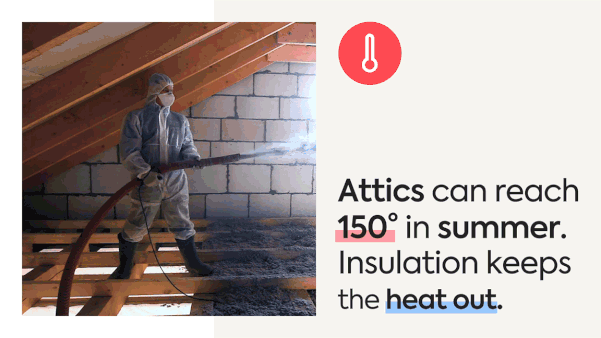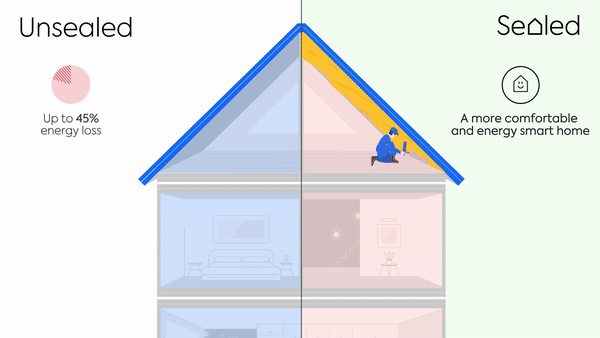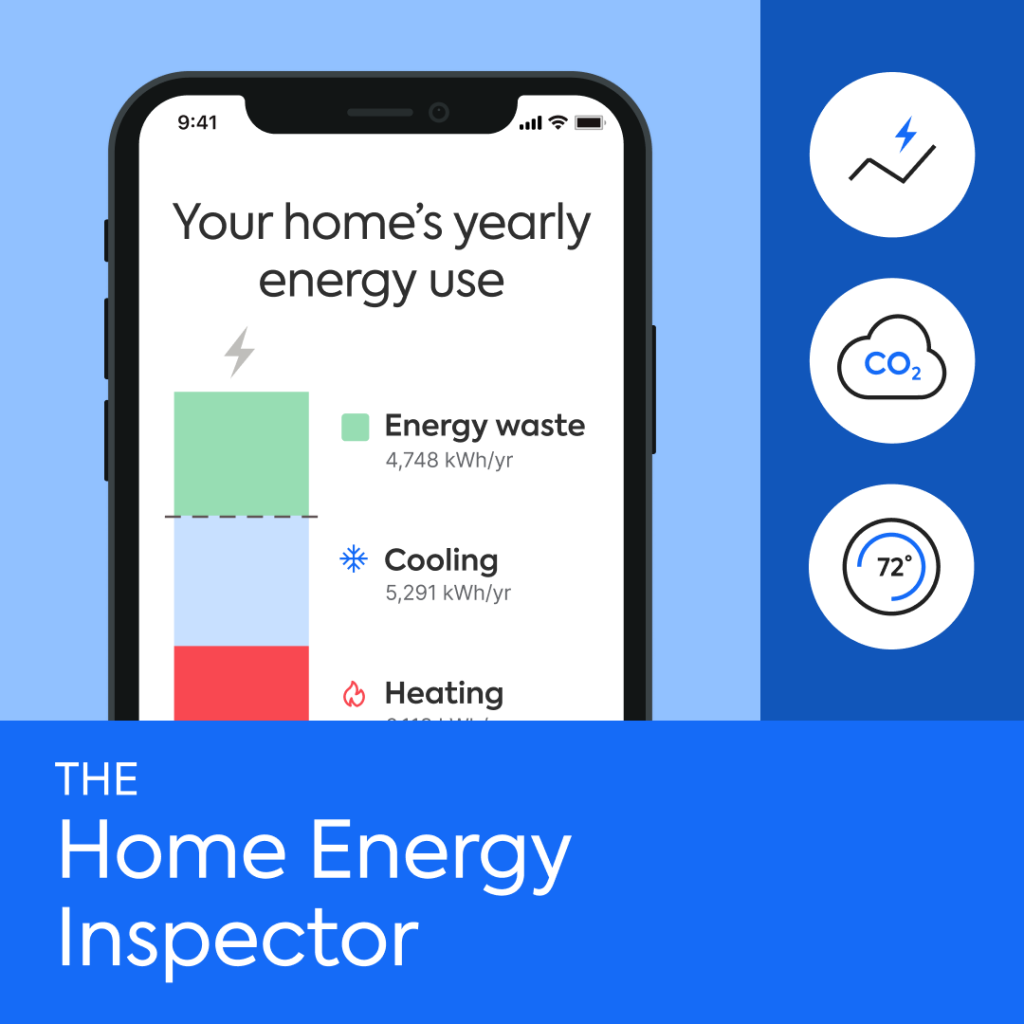Is your house too hot to handle? You don’t have to live this way. Discover what you need to do to feel cooler inside—permanently.
If your house just can’t keep cool in the summer months, don’t worry—there’s a solution.
In fact, we fix this problem for customers all the time.
We’re Sealed, and excess heat and stuffiness is one of the primary complaints we get about homes (and since we’re home upgrade experts, you better believe we see a lot of complaints).
And depending on where you live, we could fix your hot, stuffy house, too. We even guarantee the results! Tap here to see if you qualify.
But why does your house feel like a sauna—even with the AC on? Well, let’s do some troubleshooting.
Table of contents:
- Why is my house so hot with the AC on?
- What is heat load?
- 2 main reasons your house can’t handle the heat
- Why is one room in my house so hot?
- How do I stop my house from getting hot?
- What can renters do about a too-hot house?
- Fix a too-hot house permanently
The story about heat load (Or, Why is my house so hot with the AC on?)
So your AC’s thermostat is cranked down to Arctic levels, but your house still feels like the Sahara desert. What’s going on?
The answer starts with understanding the science of indoor temperature and heat retention—specifically, your home’s heat load.
No, “heat load” isn’t the name of a new 80s cover band. It’s the technical term for the amount of heat your air conditioner needs to remove from your home in order to keep it comfortable.
Here’s a quick rundown of what contributes to your home’s heat load:
- Sunny days: Long, hot days can turn your house into a greenhouse—especially if you have a lot of windows. More sunlight equals a bigger heat load—especially if you’ve got a lot of south-facing windows (1). And that means a bigger challenge for your air conditioning system.
- People and pets: The more occupants in a home—with or without fur—the more body heat and a higher heat load. So unless you’re planning to evict your teenagers or your cats, you’ll need to be sure your AC can handle the crowd.
- Appliances and electronics: TVs, computers, ovens, stovetops, dishwashers, and even light bulbs all generate heat when they’re in use. The more appliances and electronics you have running, the more they contribute to your home’s heat load.
- Gaps in your home’s exterior: Air leaks can make it much harder for your AC to maintain a comfortable temperature. Outside heat can enter your home through gaps, seams, or poorly sealed foundations and attics, forcing your AC to work overtime. (More on that later!)
- Improper insulation: If your house isn’t insulated properly, it’s easy for cold air to escape. Even worse: Hot air from the outside can seep into your home through the walls and roof. No good.
By the way, as if all this wasn’t enough, there’s another factor that might be cranking up the temperature: our changing climate.
Summers are getting more unpredictable, which means your AC has to fight harder and longer to keep you comfortable.
Okay, a quick point of order here: It’s true that summer heat is a big hurdle for your house and HVAC system, but… shouldn’t your house and HVAC be able to handle it? Isn’t that what they were designed for?

Shouldn’t your HVAC be able to handle the summer heat? Isn’t that what it was designed for?
Great questions. Let’s get to the root of the problem.
The 2 main reasons your house can’t handle the heat load this summer
Okay, here’s where we cut to the chase. If your house is struggling to keep your living spaces cool, it’s almost always due to one of two main factors (or both!):
- Too much hot air is getting in.
- Your AC isn’t up to the challenge.
Let’s talk through each one in a bit more detail.
1. Too much hot air from the outside is getting into your house
It’s true that your AC is designed to keep your house cool, but the only way it works well and efficiently is if your house has a functional thermal barrier.
(Don’t be scared by the term! A “thermal barrier” is just a way of describing the insulation and sealing that helps keep hot air out and cool air in.)
If your house has any leaks or gaps in the thermal barrier (spoiler: it probably does!), or if you’ve got a poor insulation situation, hot air and humidity will sneak its way in.
And the more hot air that gets in, the harder your AC has to work to cool your home down, shortening your HVAC’s lifespan and costing you more in energy bills.
2. Your HVAC system just isn’t up to the challenge of keeping your house cool
If your AC can’t handle your home’s heat load, it won’t be able to keep your house cool—no matter how low you set the temperature.
Your AC might be unable to cool your house effectively for plenty of reasons:
- Incorrect size: If your AC system is too small, it’ll struggle to cool your house effectively. (But don’t go too big either! That creates other problems you definitely don’t want to deal with.)
- Age of the unit: AC systems have a lifespan, and as they approach the end of that lifespan, they tend to lose efficiency in cooling your home. Sometimes, upgrading to a newer, more energy-efficient system is the best solution.
- Lack of maintenance: Believe it or not, the maintenance and air filter schedule in the owner’s manual isn’t a job-security scheme for HVAC technicians. Air conditioning systems need attention on a regular basis to keep operating at a high level. (And even if you maintain your cooling system faithfully, there are plenty of other reasons a system might fail. Tap here to learn the reasons why your AC is not working.)
We’ve presented these as two distinct issues, but the reality is that—in many US homes—both are a problem: Your house is taking in too much outside air and your AC isn’t up to the challenge.
First, though, a quick aside for those of you who have a very specific (and very common) heat issue in your home.
Why is one room in my house so hot?
Let’s say there’s one room in your house that’s consistently hotter than the rest. Maybe it’s the room where the dog lives, or the room that gets the most sunlight—or maybe it’s the whole darn upstairs floor.
Is there a special reason that one area has more heat than the others? (By the way, if you don’t have this problem, feel free to tap here and skip ahead to the fixes.)
Sure. Different rooms have different factors affecting their temperature, such as sunlight exposure, ventilation and airflow problems, and insulation issues.
This is especially true in older homes, which were often designed with lots of small nooks and crannies that are difficult to cool efficiently.
But, by and large, your home should be equally comfortable everywhere, and if it’s not—the same issues are still at play.

If one room in your home is too hot (or one specific area, like the upstairs or the living room near your uninsulated attached garage), it means:
- There’s too much hot air getting into that area, and/or
- Your AC unit isn’t doing a good job of removing the heat from that room (which could be due to a variety of factors)
Simple, yes? But, of course, just because the roots of a problem are simple doesn’t automatically mean the problem is easy to fix.
Luckily, there are specific steps you can take to remedy each of these issues. Keep reading!
If your house has any leaks or gaps in the thermal barrier (spoiler: it probably does!), or if you’ve got a poor insulation situation, hot air and humidity will sneak its way in.
How do I stop my house from getting hot?
So, you’ve had enough of the tropical climate and you’re ready to take action.
(Or, at least, you’re ready to call in the professionals to take action for you.)
Here’s what needs to happen to fix your house for good:
- Air seal your house: Imagine trying to fill a sieve with water. No matter how much water you pour in, it’s always going to leak out, right? That’s what’s happening with the cool air in your house—if you haven’t sealed it properly. That’s because if your house is like most in the US, it’s got tons of tiny gaps and cracks that you can’t see—and those gaps and cracks result in a ton (up to 15%!) of air leakage and energy waste (2).
(Read: 9 signs your home is wasting energy)
The solution? Hire a professional to stop up the air gaps. It makes a huge difference in how your house feels.
If you’re interested in learning more about air sealing—and about all the tiny gaps and holes that you probably can’t see in your house—we recommend reading our complete guide to air sealing. - Make sure your attic is properly insulated: Some, folks might overlook this one, because who thinks about their attic on a daily basis? But an under-insulated (or completely uninsulated!) attic is basically an open invitation for hot air to come into your house through the roof—which is one reason that many homes are much warmer upstairs than they are downstairs.
And if your home is older than a decade and has an attic, there’s a pretty good chance that the attic isn’t insulated correctly (especially if you’ve got one of those large, old houses that never seem to cool down).
You can read more about attic insulation here. For now, it’s enough to know that stopping hot air from entering through the top of your house can make a huge difference in your comfort level. - Get an AC system that’s up for the challenge:
Finally, let’s talk about your AC unit. Maybe it’s just gotten too old to cool your house well. Or it’s possible that it’s just not powerful enough to handle the heat load. Or it’s very possible that your HVAC system just wasn’t well-designed in the first place.
Whatever the case, the result is the same: Ultimately, you need new HVAC.
If you’re in this situation, we highly recommend considering a whole-home heat pump. Heat pumps are the superheroes of the HVAC world, able to both heat and cool your home. They work by transferring heat energy from one place to another.
In the summer, they take heat from inside your home and move it outside, keeping your indoor climate nice and cool. In the winter, they reverse the process to heat your home.
Because this process is so efficient, heat pumps use up to 3x less energy than traditional AC systems (3).
Essentially, a whole home heat pump system is an all-in-one replacement for your separate AC and heating units. You’ll see the difference in your energy usage.
We should also call out that heat pumps are especially great if your house is difficult to cool evenly because they’re compatible with zone-by-zone cooling—which means every part of your house will feel exactly the way you want it to. (And you don’t even need ductwork if you go with a mini-split AC heat pump.)
If you want your home to feel completely different (cool and comfortable!) and get the biggest bang for your buck, these big three home upgrades are the way to go.
But speaking of the buck, we should acknowledge something important here: None of these upgrades are free, and some of them can be pretty pricey if you’re paying upfront.
Just how do you pay for this project?

Cool your house down permanently
Getting your house in condition to beat summer heat (or the winter chills!) can be a complex and expensive project—a project that can be pretty intimidating without expertise.
That’s why Sealed exists. If your house is eligible, you can get a home upgrade plan from experts with years of experience in climate control and home airflow.
We don’t do cookie-cutter solutions, either. Your upgrade plan will be based on the unique needs of your house—including the type of materials you’d like to use—and designed to ensure that your house feels amazing… even on the hottest, most humid day of the year.
We’ll put together a custom plan, hire expert contractors, and make sure the work gets done right. Even better—we offer a money-back guarantee.
All you need to do is take a 2-minute questionnaire to see if your home qualifies.
If your house is eligible, you can get a home upgrade plan from experts with years of experience in climate control and home airflow.
Wait—what if I’m a renter and my house is too hot? What can I do?
If you’re renting right now, you can still cool yourself down—and possibly conserve some energy during the hotter months.
We recommend the following articles to learn more:
- Considering a window AC unit? Read this first.
- How to stay cool on a hot day without AC
- How to conserve energy at home
- Why is my house so humid?
If you have a good relationship with your landlord or rental company, depending on where you live, there may be incentives for them to add home energy upgrades to their rental properties. (And there may be some for you, too—check with your State Energy Office.)
Energy upgrades are a win-win situation for you and your landlord: Many of the same upgrades that can help you save energy and stay comfortable as a renter also boost their property value, reduce excess moisture in the home, lengthen the lifespan of their roof and HVAC systems, and more.
We recommend sending them the Sealed Inflation Reduction Act home energy rebates and tax credits guide to learn all about it.

Ready to crunch the numbers?
Check out our home energy usage calculator to see where you could cut energy waste BIG TIME… all while making your house feel better year round.